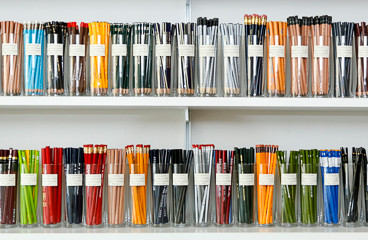Learning About Obsessive-Compulsive Disorder (OCD) in Children
Overview

Obsessive-compulsive disorder (OCD) is a mental health condition. It makes your child have unwanted thoughts
that occur over and over. To stop those thoughts, your child might develop a compulsion. This is an action or
ritual that is done again and again.
For example, a child might worry constantly that if they get dirty, they will get sick. To handle this
feeling, the child might wash their hands or clothes or clean things over and over.
The action makes your child feel better for only a short time. If your child tries to resist the urge to do
it, they may feel very anxious or have panic attacks. The same can happen if your child isn't allowed to do
the action.
Therapy can help your child learn to manage thoughts and actions. Your child may have one-on-one therapy,
group therapy, and family-focused therapy.
Your doctor also may prescribe medicine to help with symptoms.
What causes it?
Experts don't know the cause of OCD. Some think that there may be a problem with the way one part of the
brain sends information to another part. This may involve changes in the levels of certain brain chemicals,
such as serotonin.
Some experts believe that strep infections can suddenly bring on OCD in some children or make its symptoms
worse. These infections include strep throat and scarlet fever.
What are the symptoms?
Symptoms of OCD often come and go over time. And they can change as a child gets older.
Symptoms include:
-
Obsessions. These are unwanted thoughts, ideas, and impulses that your child has again and again. They get
in the way of normal thoughts and cause anxiety or fear. Examples include:
-
Compulsions. These are behaviors that your child repeats to try to control the obsessions and reduce
anxiety. Examples include:
The obsessions or compulsions usually take up more than 1 hour a day. They greatly interfere with your
child's normal routine. They also affect social activities and relationships.
Sometimes children may understand that their obsessions and compulsions aren't real. But often they may not
be sure.
How is it diagnosed?
Your doctor can check for OCD by talking with you and your child. The doctor will ask about your child's
symptoms and past health. The doctor may also ask about any family members who have had similar symptoms. The
doctor may also do a physical exam.
How is it treated?
Doctors use medicines and counseling to treat OCD.
Antidepressant medicines are used most often. Antidepressants work differently for everyone. Your doctor will
help find the medicine and dose that works best for your child.
Counseling for OCD includes a type of cognitive behavioral therapy. It's called exposure and response
prevention. It slowly increases your child's contact with the thing that causes worries or false beliefs. This
therapy can reduce symptoms over time.
Other therapy may also help your child learn to manage thoughts and actions. Your child may have one-on-one
therapy, group therapy, and family-focused therapy. Family-focused therapy helps you learn how to help your
child.
Treatment can make the symptoms less severe. But your child may still have some mild symptoms after treatment
starts.
Follow-up care is a key part of your child's treatment and safety. Be sure to make and go to all
appointments, and call your doctor if your child is having problems. It's also a good idea to know your
child's test results and keep a list of the medicines your child takes.
Current as of: June 24, 2023
Content Version: 14.0
Care instructions adapted under license by your
healthcare professional. If you have questions about a medical condition or this instruction, always ask
your healthcare professional. Healthwise, Incorporated disclaims any warranty or liability for your use of
this information.